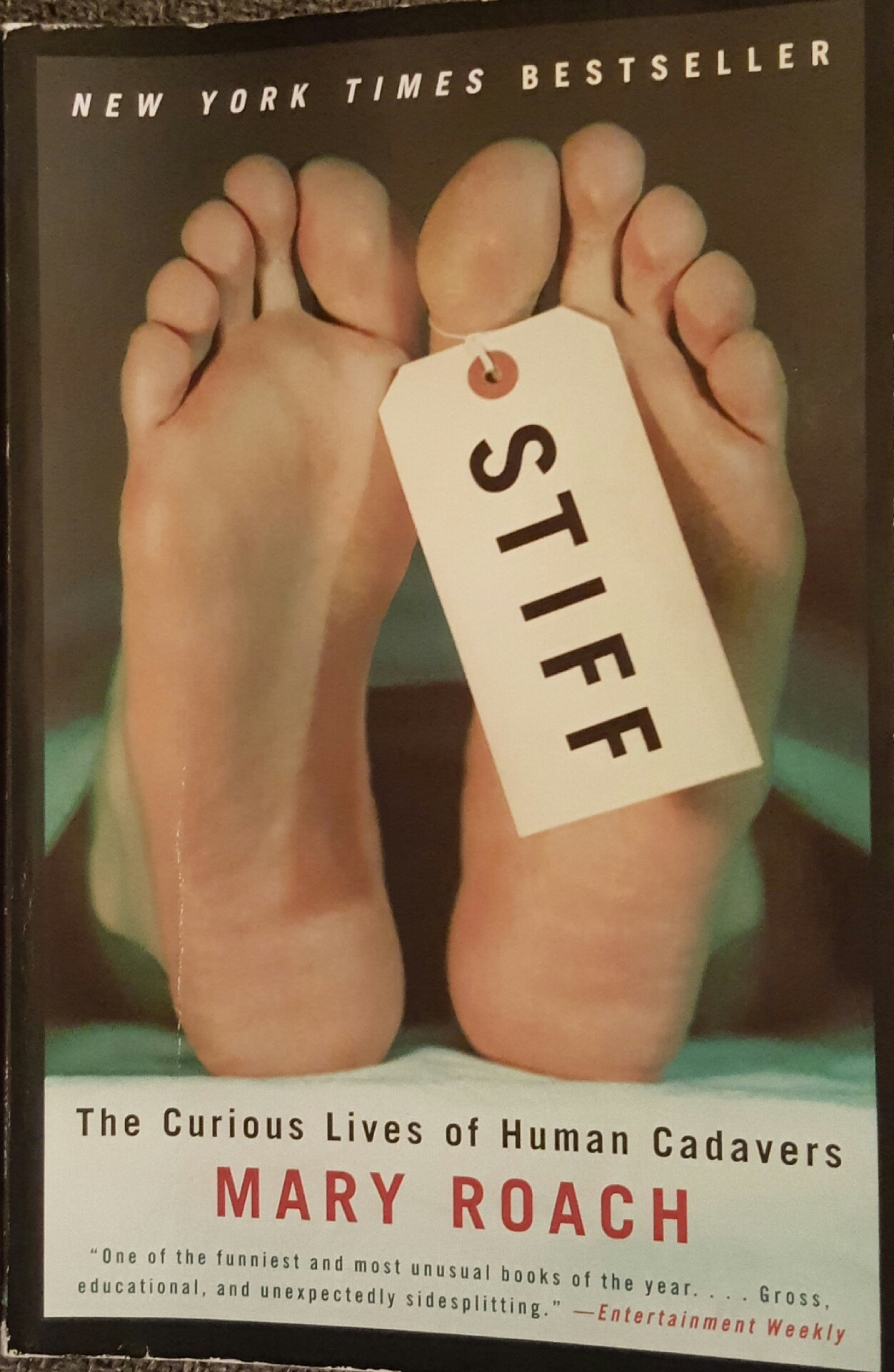 I have no idea what prompted me to bring my recent impulse-buy, Stiff, with me on a cruise, but I did. As Mr. H and I headed to the deck for a little sunbathing on our first day at sea, I questioned myself. With some trepidation, I opened the book and read the first paragraph of the introduction, which erased any doubt:
I have no idea what prompted me to bring my recent impulse-buy, Stiff, with me on a cruise, but I did. As Mr. H and I headed to the deck for a little sunbathing on our first day at sea, I questioned myself. With some trepidation, I opened the book and read the first paragraph of the introduction, which erased any doubt:
The way I see it, being dead is not terribly far off from being on a cruise ship. Most of your time is spent lying on your back. The brain has shut down. The flesh begins to soften. Nothing much new happens, and nothing is expected of you.
Yes, this book was perfect reading material for my first cruise.
I don’t necessarily have a fascination with death, although I do love crime shows, such as CSI, NCIS and Criminal Minds. And, similarly, I tend toward dark novels, with an absolute love for Stephen King and a recent penchant for Lee Child’s Jack Reacher series.
Perhaps because of this interest, I have full appreciation for Mary Roach’s professional, respectful, and occasionally humorous review of the many options to be considered for post-mortem disposal. Burial? Sure. Embalming? Yes, with information on history. Or, cremation, with a great perspective on recent shifts in popularity of these options.
More fascinating, though, are the myriad of paths that open up for the cadaver that is destined for science and research. For example, what good is the data gathered by analysis of a crash test dummy, without the relevant analysis of human limitations, provided by research done of crash test cadavers? Or, consider how forensic scientists (so popular in my TV dramas) are able to ascertain time of death, without relative information from “control” subjects (aka cadavers left baking in the sun or shade, or buried in shallow graves or cemented into concrete or dumped in ponds or…let your twisted imagination run amok). Cadavers are used to help scientists understand the many variables of decomposition in a plethora of environmental conditions.
Cadavers are also useful subjects in analysis of passengers of failed air travel. Whether by bomb, or fire, or other causes, for air crashes, especially those which occur over sea space, without benefit of black box or aircraft remains, bodies are the best source of forensic information.
Mary Roach’s work even touches on the touchy subject of cannibalism, with her research into various myths and legends. And, she explores the relatively recent trend toward the idea of composting our loved ones, which, as recently as last year, was still a “hot topic” for consideration.
Personally, I am grateful for her insight, as well as the benefit of her research. I am much better prepared for my next murder mystery, and have a greater understanding of the options (and implications) for my own “beyond.”
I’ll close with words of Mary Oliver, in a poem I fell in love with today, discovered independently, When Death Comes:
When it’s over, I want to say all my life I was a bride married to amazement. I was the bridegroom, taking the world into my arms.
When it’s over, I don’t want to wonder if I have made of my life something particular, and real.
I don’t want to find myself sighing and frightened or full of argument.
I don’t want to end up simply having visited this world.
Because … what will always be more important than death, or what happens after, is the life we’ve lived.


